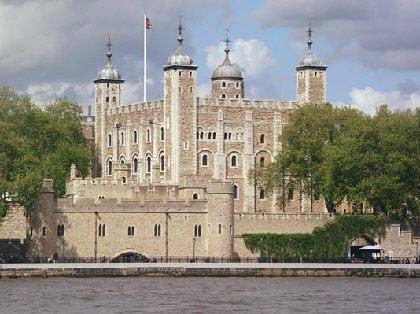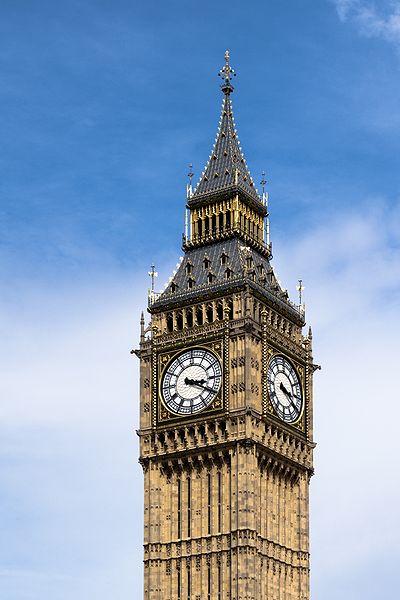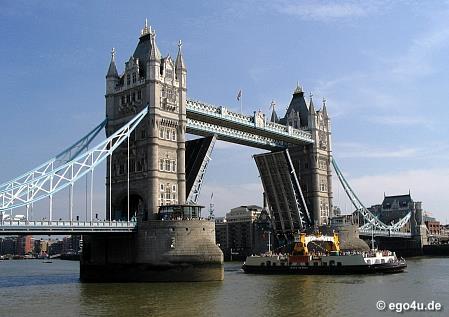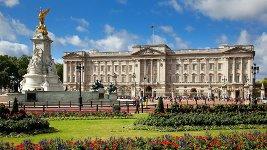- Английский язык: упражнения по страноведению с ответами
- Упражнения по страноведению
- Ответы к упражнениям по страноведению
- викторина «Англоговорящие страны» методическая разработка по английскому языку по теме
- Скачать:
- Предварительный просмотр:
- Комплекс упражнений на закрепление темы «Англоговорящие страны. Национальности, традиции» (7 класс)
- Просмотр содержимого документа «Комплекс упражнений на закрепление темы «Англоговорящие страны. Национальности, традиции» (7 класс)»
Английский язык: упражнения по страноведению с ответами
Перед вами подборка упражнений по страноведению Великобритании и США. Данный материал предназначен для использования на уроках английского языка в 5, 6, 7 классе. Более сложные тесты по страноведению здесь:
Для 5 – 6 класса также будет интересен материал Задания по теме США.
Ну что же, ниже – обещанные упражнения по страноведению на английском с ответами.
Упражнения по страноведению
Упражнение 1. Match the 2 columns
1. Charlie Chaplin
Упражнение 2. Complete the names
Упражнение 3. What do these names mean in British and American culture? Match the names with their definitions.
1) Madame Tussaud’s is
2) Paddington is
4) A cardigan is
5) A balaclava is
7) The Simpsons are
b) A railway station in London
c) A wax museum in London
d) A famous American cartoon family
e) A British actor and producer
f) An organization for boys and girls in Britain and America
g) A soldier at the Tower of London who wears special uniform
h) A warm woolen short jacket with buttons
Exercise 4. Do the test.
- The traditional English drink is ________
a) milk b) tea c) coffee d) cocoa
2. Who was the first woman Prime Minister of Great Britain?
a) Churchill b) Thatcher c) Blair d) Brown
3. Who wrote a popular book about Harry Porter?
a) Rawling b) J. Tolkien c) R. Dahl d) A. Lindgren
4. ______ is famous for the novel about Robinson Crusoe
a) Agathie Christie b) Conan Doyle c) Mark Twain d) Daniel Defoe
5. The Loch Ness monster lives in _________
a) America b) Switzerland c) Canada d) Scotland
6) Madame Tussaud’s is _____________.
a) A wax museum in London
b) A famous American cartoon family
c) A British actor and producer
7) Who climbs the chimney and puts presents into the stockings at Christmas in Britain?
8. The capital of Britain is ____________
Упражнение 5. Name the following.
- Holiday Dec 26!
- Name of the British flag.
- Color of famous London buses.
- Princess who died in 1997.
- National sport of England.
Ответы к упражнениям по страноведению
Exercise 1. 1 – c; 2 – b; 3 – d; 4 – a
Exercise 2. Westminster Abbey, Trafalgar Square, Kensington Gardens
Exercise 3. 1 c; 2 b; 3 g; 4 h; 5 a; 6 f, 7 d, 8 e
Exercise 4. 1 – b; 2 – b; 3 – a; 4 – d; 5 – d; 6 – a; 7 – b; 8 – c
Exercise 5. 1 – Boxing Day, 2 – Union Flag / Union Jack; 3 – red; 4 – Diana; 5 — cricket
Надеюсь, вам понравились эти упражнения по страноведению.
Понравилось? Сохраните на будущее и поделитесь с друзьями!
Источник
викторина «Англоговорящие страны»
методическая разработка по английскому языку по теме
Викторина для недели английского языка в школе, а такжн для подготовки к олимпиаде по английскому языку
Скачать:
| Вложение | Размер |
|---|---|
| viktorina_anglogovoryashchie_strany.docx | 57.38 КБ |
Предварительный просмотр:
викторину “Do you know Great Britain?”
- How many parts are there in Great Britain?
- What river is the capital situated on?
- Who is the head of the country?
- What is the home of the Queen?
- What is the double-decker?
- What is Big Ben?
- What is the symbol of England?
- Where did the detective Sherlock Holmes live?
- What is the most famous lake in Scotland?
- Why is the city Bath called so?
- Who is the most famous woman-writer of detective stories?
- What books of English writers do you know?
- What is the oldest part of London?
- What is the symbol of Scotland?
- What is the symbol of Wales?
- What is the Scottish national costume?
- What is the national instrument of Scots?
- When do British people celebrate Christmas?
- Who wrote about Winnie the Pooh?
- Who is the writer of “Mary Poppins”?
- Who is the author of books about Harry Potter?
- Can you guess:
- He was English. He was born in 1564. He was a writer and actor. (W. Shakespeare)
- He was born in London. Then he lived in the USA. He was a film actor (Ch. Chaplin)
- He conquered Great Britain. He was a king. He built the Tower of London (William the Conqueror)
23. Put these holidays in the correct order:
a) New Year’s Day,
b) April Fool’s Day,
c) St. Valentine’s Day,
d) Christmas
Викторина для 8 — 9 классов “ Do you know the USA?”
- What is the name of the Dutch settlement which became New York City?
- Which country presented the USA with the statue of Liberty? What was the occasion?
- In which famous place do people in New York City celebrate New Year’s Day?
- Which American rock-and-roll star lived in Memphis, Tennessee?
- What monument in Washington D.C. dedicated to an American President is nicknamed “The Pencil”?
- What is the name of the famous collection of museums in Washington?
- Explain the symbolism of the stars and stripes on the US flag.
- On what river is the capital of the USA situated?
- Where does the President of the USA live and work?
- Which is the biggest state in the USA?
- Who was the 1st President of the USA?
- What do the Americans celebrate on the 4th of July?
- In which city is Hollywood?
- What street in New York is called “The Great White Way”?
- What is the highest building in Washington?
- Who was the 1st President lived in the White House?
- What is the largest city in the USA?
- In which state do the highest trees in the world grow? What are they called?
- Which is the smallest state in the USA?
- Who is the President killed by Oswald?
- The first colonists started the tradition of a) Halloween, b) Independence Day, c) Thanksgiving Day, d) Memorial Day.
- Who was the 42d President: a) Clinton, b) Kennedy, c)Johnson, d) Washington
Викторина для учащихся 10-11 классов “Do you know Australia?”
- What kind of state is Australia?
- Who is the Head of Government?
- Who is the Head of the State?
- What colour is the flag of Australia?
- Which are the national colours?
- Where is the seat of the state government located?
- How many chambers are there in the Australian Parliament?
- Which city was the capital of Australia till 1917?
- What are the languages in Australia?
- What animals can be seen on Australia’s coat-of-arms?
- Which is the hottest month of Australia?
- Which is the highest point in Australia?
- Which is the longest river in Australia?
- What are the largest cities of Australia?
- When was the first white settlement founded in Australia?
- Who sailed to Botany Bay first?
- When did the constitution come into effect?
- When did the first shipload of free immigrants arrive?
- Who was the first European settles in Australia?
- Who discovered Australia?
- What is the official name of Australia?
- When do the Australians celebrate Australia’s Day?
- What does the name Canberra mean in the Aborigine language?
- What can one find in Sydney and in London?
- Who proposed the name of Australia?
- How Canberra is often called?
- Who was Melbourne?
- Who was Brisbane?
- In whose honour did they call the city of Sydney?
- Who was Adelaide?
- How do the Australians call their natural countryside?
- When did the last full-blood Tasmanian Aborigine die?
- What is the Pav?
- Why do most children in Australia study through correspondence courses?
- What is the largest sandstone monolith in the world?
ЦЕЛЬ УРОКА – формирование языковой компетенции
1. Совершенствование лексических навыков
2. Совершенствование навыка аудирования
3. Совершенствование навыка чтения с полным пониманием.
4. Совершенствование навыка аналитического мышления.
Данный урок-лекция основывается на ранее изученной теме “Varieties of English” блока №8 УМК“MATRIX”, intermediate (Kathy Gude, Michel Duckworth
Издательство Oxford University Press, 2002 г.) и служит образцом для создания собственных проектных работ учащимися. В конце урока учащимся предлагается выбрать тему для работы над проектом ‘VARIETIES OF ENGLISH’
Сообщение темы и цели урока.
Лекция с демонстрацией слайдов.
Выполнение задания на перевод с австралийского на русский.
Аудирование песни на австралийском языке.
Socio-Historical Linguistic Context
Australian English began diverging from British English shortly after the foundation of the Australian penal colony of New South Wales in 1788. British convicts sent there, (including Cockneys from London), came mostly from large English cities. They were joined by free settlers, military personnel and administrators, often with their families. However, a large part of the convict body were Irish, with at least 25% directly from Ireland. There were other populations of convicts from non-English speaking areas of Britain, such as the Welsh and Scots.
Already in 1827 Peter Cunningham, in his book Two Years in New South Wales , reported that native-born white Australians of the time spoke with a distinctive accent and vocabulary, with a strong Cockney influence.
The transportation of convicts to Australia ended in 1868, but immigration of free settlers from Britain, Ireland and elsewhere continued. Thus, the former Australian English began as a mixture of Cockney, Irish, Welsh and Scotish.
The American military personnel in World War II brought American influence; though most words were short-lived; and only okay , you guys , and gee have persisted. Since the 1950s the American influence on language in Australia has mostly come from pop culture, the mass media, computer software and the internet. Some words, such as freeway and truck , have even been naturalised so completely that few Australians recognise their origin.
American, British and Australian variants exist side-by-side; in many cases – freeway and motorway (used in New South Wales) for instance – regional, social and ethnic variation within Australia typically defines word usage. Words of Irish origin are used such as bum for «backside» (Irish bun ), tucker for «food», as well as one or two native English words whose meaning have changed under Irish influence, such as paddock for «field».
Variation and Changes
Three main varieties of Australian English are spoken according to linguists: broad , general and cultivated . They often, but not always, reflect the social class or educational background of the speaker.
Australian English is recognisable and familiar to English speakers around the world because it is used to identify Australian characters in non-Australian films and television programs.
The majority of Australians speak with the general Australian accent British words such as mobile (phone) predominate in most cases.
Australian English has some similarities to British Received Pronunciation, and is often mistaken for it.
There are no strong variations in accent and pronunciation across different states and territories.
Australian English has some peculiarities in pronunciation.
But surely, the most remarkable changes appeared to be in vocabulary.
In 1945 Sidney J. Baker published the book The Australian Language which was a milestone in the emergence of a separate Australian Standard.
Australian English has many words that some consider unique to the language. One of the best known is outback, , meaning a remote, sparsely populated area. Another is The bush meaning either a native forest or a country area in general.
- Fair dinkum can mean “are you telling me the truth?”, “this is the truth!”, or “this is ridiculous!” depending on context — the disputed origin dates back to the gold rush in the 1850s, “dinkum” being derived from the Chinese word for “gold” or “real gold”: fair dinkum is the genuine article.
- Extinct East Midlands dialect in England: dinkum means hard work or fair work
- Dinky-di means true or devoted : a ‘dinky-di Aussie’ is a ‘true Australian
G’day is well known as a stereotypical Australian greeting — it is worth noting that G’day is not synonymous with the expression “Good Day”, and is never used as an expression for «farewell». Many of these terms have been adopted into British English via popular culture and family links.
Speaking about word-forming, we may say that Australian English has a unique set of diminutives formed by adding -o or -ie (- y ) to the ends of (often abbreviated) words. There does not appear to be any particular pattern to which of these suffixes is used.
Источник
Комплекс упражнений на закрепление темы «Англоговорящие страны. Национальности, традиции» (7 класс)

С помощью данных упражнений можно закрепить или проверить знания обучающихся. Все упражнения даны с ответами.
Просмотр содержимого документа
«Комплекс упражнений на закрепление темы «Англоговорящие страны. Национальности, традиции» (7 класс)»
Тема: Англоговорящие страны. Национальности, традиции.
Fill in the correct words.
… is normal in Britain, when they are waiting for bus, waitng to be served in a shop
The Boat … In March A rowing race between the universities of Oxford and Cambridge. On the river Thames in London (7,2 km).
… Day In March. The last day before Lent. Pancake race-running while holding a pancake in a frying pan. Competitors have to throw it in the air and catch it again in the pan.
April … Day April 1 A day of practical jokes. You have to play the joke before 12 o’clock midday, otherwise the joke is on you.
The London … One of the biggest … in the world. Each year about 30,000 people start the race and about 25,000 finish.
.The last week of July and the first week of June. In South-West London. One of the four great world tennis championships and the only one which is played on grass.
…is on the 31 st of October. A pagan festival celebrates the return of the souls that visit their former houses. People dress up as witches, ghosts etc. Houses are decorated with pumpkins.
The … is a tall giant Ferris wheel situated on the banks of the River Thames, in London, England. It is the tallest Ferris wheel in Europe, and the most popular paid tourist attraction in the United Kingdom.
… Day December 2. Religious ceremony commemorating the birth of Christ. Children wake up early to find presents in their stockings. Traditional … tree and dinner.
Word-box: Halloween, Wimbledon, Pancake, Fool`s, Marathon, Christmas, Race, Queuing, London Eye.
Choose the correct answer.
British buses are double-decked and black\yellow\red.
Mail-boxes are yellow\red\black.
Most English love garden in front\behind (of) the house.
They prefer houses with a fireplace\ flat\modern houses with central heating\ and a garden \
The houses are traditionally not very high\ high \low.
They are usually one\ two\three-stored.
The English people love\don`t love animals very much.
Guess the words:
Key: Tower, Westminster Abbey, Parliament, Big Ben, Buckingham Palace .
Match the beginning with the ending
East or West a) is his castle
There is no place b) knows much
The Englishman`s home c) like home
He who travels far d) home is best
Travelling e) by is traditions
So many countries f) broadens the mind
Every country is strong g) so many customs
East or West, home is best.
There is no place like home.
The Englishman`s home is the castle.
He who travels far knows more.
Travelling broadens the mind.
So many countries , so many customs.
Every country is strong by is traditions.
Match the words with the pictures.
The Tower of London
The House of Parliament
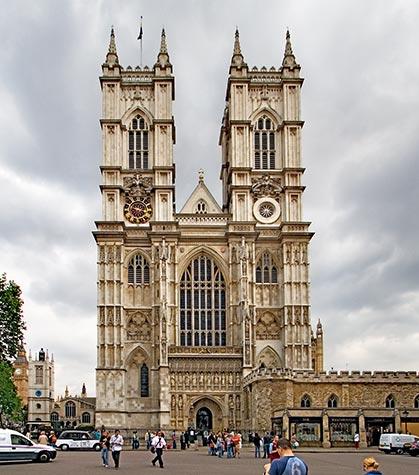
Key: 1-b, 2-c, 3-a, 4-d, 5- f, 6- e.
Match the words with their definition
The Tower of London
The Palace of Westminster is the place where members of Parliament gather to make laws.
It is the nickname for the Great Bell of the clock at the north end of the Palace of Westminster in London.
The House of Parliament
It is a historic castle located on the north bank of the River Thames in central London. The castle was used as a prison from 1100 until 1952.
It`s the London residence and principal workplace of the monarchy of the United Kingdom.
It is a large, mainly Gothic abbey church in the City.
It is a combined bascule and suspension bridge in London.
It was one of the largest churches in northern Europe
Saint Paul’s Cathedral
It is a public space and tourist attraction in central London, built around the area formerly known as Charing Cross
Key: 1- C, 2- E, 3 – A, 4 – B, 5 – F, 6 – D, 7 – H, 8 – G.
Источник


